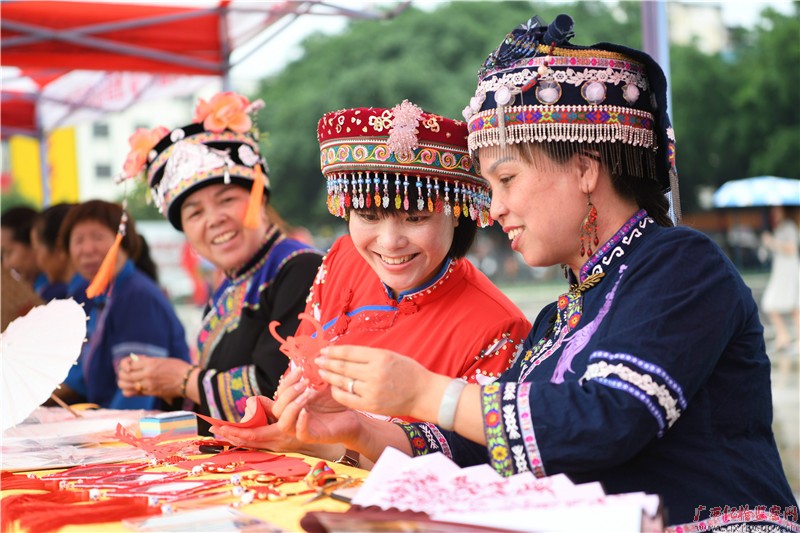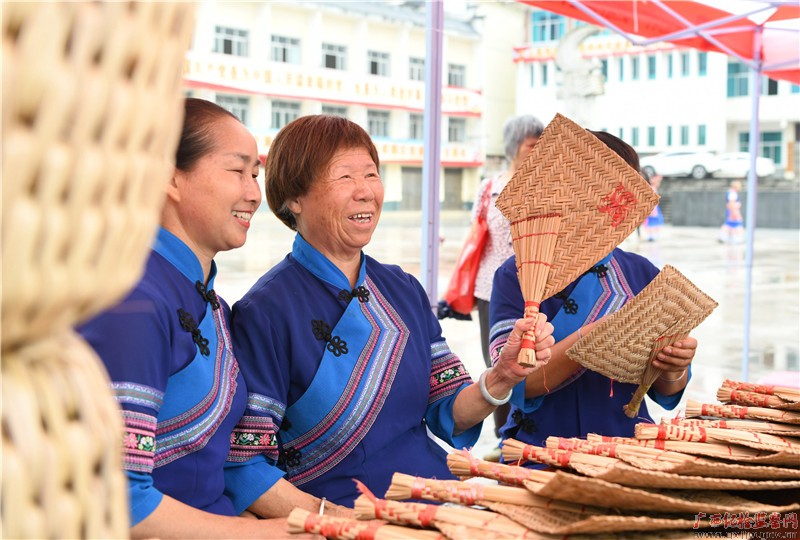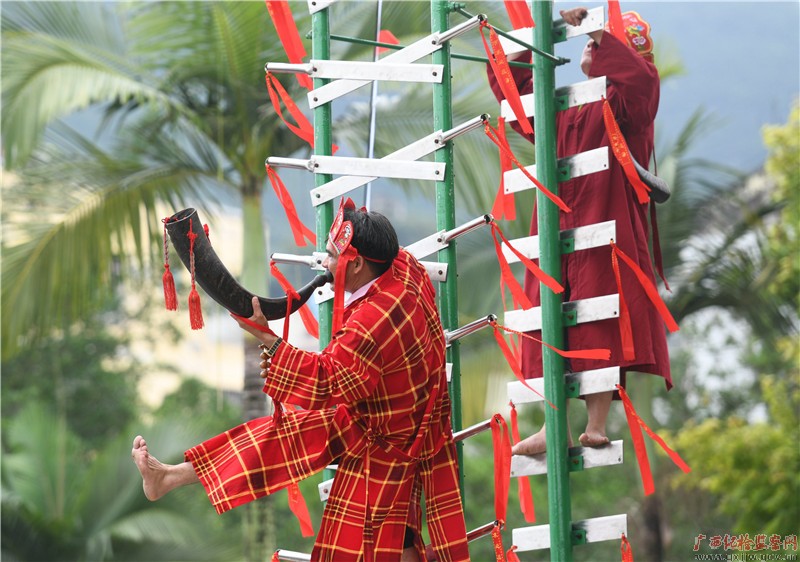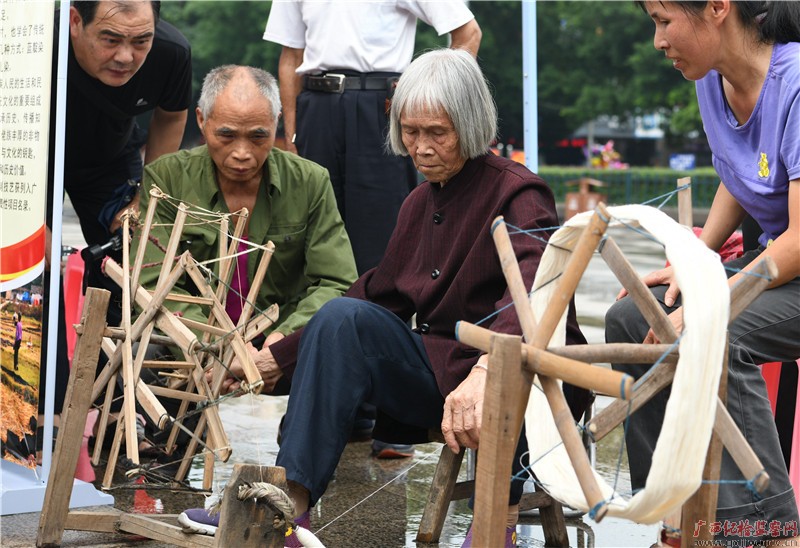Original title: Cultural and Natural Heritage Day’s Traditional Skills “Go to Market”
The second Saturday in June every year is my country’s Cultural and Natural Heritage Day, which is one of the important themes of Chinese cultural construction. In order to create a good atmosphere for the protection of cultural and natural heritage, and raise the people’s awareness of the importance of cultural and natural heritage protection, Luocheng Mulao Autonomous County held exhibition activities in the National Cultural Square to promote cultural skills and natural heritage to the general public.
 The paper-cutting technique of the Mulao people is a traditional art technique passed down from generation to generation by the Mulao people. In 2018, “Mulao Paper-cutting Skills” was selected as the seventh batch of autonomous region-level intangible cultural heritage representative projects in Guangxi. (Photo by Meng Zengshi)
The paper-cutting technique of the Mulao people is a traditional art technique passed down from generation to generation by the Mulao people. In 2018, “Mulao Paper-cutting Skills” was selected as the seventh batch of autonomous region-level intangible cultural heritage representative projects in Guangxi. (Photo by Meng Zengshi) Mulao people’s straw weaving skills. There are many chapters in the ancient songs handed down by the Mulao people that reflect the culture of rice cultivation. The Mulao people are ingenious and good at taking local materials. They say that straws are woven into straw hats, straw piers, fans and other production and daily necessities. (Photo by Meng Zengshi)
Mulao people’s straw weaving skills. There are many chapters in the ancient songs handed down by the Mulao people that reflect the culture of rice cultivation. The Mulao people are ingenious and good at taking local materials. They say that straws are woven into straw hats, straw piers, fans and other production and daily necessities. (Photo by Meng Zengshi)
Production of coal sand tanks. The Mulao Autonomous County, Luocheng, Guangxi, is rich in coal. The Mulao people developed coal mines in the early Song Dynasty, and gradually mastered the skill of making food and drinking utensils from coal sand. The coal sand tank is unique to the life of the Mulao people. Utensils can not only cook food, but also store food. In May 2012, the Mulao coal sand tank was included in the fourth batch of autonomous region-level intangible cultural heritage protection list in Guangxi. (Photo by Tan Xueying/)
 In the National Culture Square of the Mulao Autonomous County, Luocheng, folk artists are performing traditional sports and acrobatics “Up to the Knife Mountain”. (Photo by Meng Zengshi)
In the National Culture Square of the Mulao Autonomous County, Luocheng, folk artists are performing traditional sports and acrobatics “Up to the Knife Mountain”. (Photo by Meng Zengshi) The elderly of the Mulao ethnic group are demonstrating the traditional spinning crafts of the Mulao ethnic group. (Photo by Meng Zengshi)
The elderly of the Mulao ethnic group are demonstrating the traditional spinning crafts of the Mulao ethnic group. (Photo by Meng Zengshi)(Supervisory Committee of Discipline Inspection Commission of Mulao Autonomous County, Luocheng, Hechi City)
.
